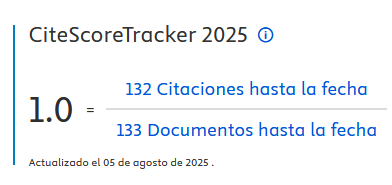What Makes You Think You are Feminist? Development and Validation of the Feminist Attitudinal and Behavioral Scale for Teachers
DOI:
https://doi.org/10.5944/rdp.v35i128.38806Keywords:
feminism, fattitudes, behaviors, teachers, scale developmentAbstract
Teachers play a key role in supporting and encouraging egalitarian attitudes at school. This study aimed to develop and validate the Feminist Attitudinal and Behavioral Scale for Teachers (FABS-T), a measure that comprises both attitudinal and behavioral domains. To do this, we conducted two studies of Childhood and Primary Education teachers and pre-service teachers. Study 1, qualitative (N = 309), asked participants about situations in which they had been portrayed as feminist. Six themes emerged, for which we developed an initial 60-item version. Study 2 (N = 451) aimed to evaluate the factor structure, reliability and validity. Exploratory and confirmatory factor analysis supported a 42-item version of the FABS-T with a final structure composed of five dimensions (56.7% of the variance explained). For both the attitudinal (Public Egalitarian Support and Private Egalitarian Support) and behavioral domain (Sexism Confrontation, Activism and Teaching Practices), reliability was good. Most dimensions were positively linked with feminist self-identification, and negatively with ambivalent sexism and social dominance orientation. Gender differences were observed in the behavioral dimensions. We highlight the need to distinguish attitudes from behaviors, where the latter was revealed as a core aspect of self-identifying as feminist.
Downloads
References
Amnesty International (2023). Women's rights are human rights: The important role of education. Retrieved from https://www.amnesty.org/en/latest/education/2023/03/womens-rights-are-human-rights/
Aronson, P. (2003). Feminists or “postfeminists”? Young women’s attitudes toward feminism and gender relations. Gender & Society, 17(6), 903-922. https://doi.org/10.1177/0891243203257145
Arvin, M., Tuck, E., & Morrill, A. (2013). Decolonizing feminism: Challenging connections between settler colonialism and heteropatriarchy. Feminist Formations, 8-34. https://www.jstor.org/stable/43860665
Asbrock, F., Sibley, C. G., & Duckitt, J. (2010). Right-wing authoritarianism and social dominance orientation and the dimensions of generalized prejudice: A longitudinal test. European Journal of Personality: Published for the European Association of Personality Psychology, 24(4), 324-340. https://doi.org/10.1002/per.746
Burrell, S., & Flood, M. (2019). Which feminism? Dilemmas in profeminist men’s praxis to end violence against women. Global Social Welfare, 6(4), 231-244. https://doi.org/10.1007/s40609-018-00136-xnfi
Calder-Dawe, O. & Gavey, N. (2016). Jekyll and Hyde revisited: Young people's constructions of feminism, feminists and the practice of “reasonable feminism”. Feminism & Psychology, 26(4), 487-507. https://doi.org/10.1177/0959353516660993
Christopher, A. N., & Wojda, M. R. (2008). Social dominance orientation, right-wing authoritarianism, sexism, and prejudice toward women in the workforce. Psychology of Women Quarterly, 32(1), 65-73. https://doi.org/10.1111/j.1471-6402.2007.00407.x
Conlin, S. E., & Heesacker, M. (2018). The association between feminist self-labeling and gender equality activism: exploring the effects of scale language and identity priming. Current Psychology, 37(1), 334-342. https://doi.org/10.1080/09589236.2017.1371007
Conlin, S. E., Heesacker, M., Allan, B. A., & Douglass, R. P. (2019). Bad feminists? Perceived self-discrepancy predicts differences in gender equality activism. Gender Issues, 36(1), 67-88. https://doi.org/10.1007/s12147-017-9200-2
Delacollette, N., Dumont, M., Sarlet, M., & Dardenne, B. (2013). Benevolent sexism, men’s advantages and the prescription of warmth to women. Sex Roles, 68, 296-310. https://doi.org/10.1007/s11199-012-0232-5
Díaz, S., & Anguita, R. (2017). Estereotipos del profesorado en torno al género y a la orientación sexual. [Teacher´s stereotypes towards gender and sexual orientation]. Revista Electrónica Interuniversitaria de Formación del Profesorado, 20(1), 219-232. https://doi.org/10.6018/reifop/20.1.228961
Díaz, A., & Sellami, K. (2014). Traits and roles in gender stereotypes: A comparison between Moroccan and Spanish native samples. Sex Roles, 70, 457-467. https://doi.org/10.1007/s11199-013-0335-7
Duckitt, J., & Sibley, C. G. (2010). Right-wing authoritarianism and social dominance orientation differentially moderate intergroup effects on prejudice. European Journal of Personality, 24(7), 583-601. https://doi.org/10.1002/per.772
Duncan, L. E., Garcia, R. L., & Teitelman, I. (2021). Assessing politicized gender identity: Validating the Feminist Consciousness Scale for men and women. The Journal of Social Psychology, 161(5), 570-592. https://doi.org/10.1080/00224545.2020.1860883
England, P., Levine, A., & Mishel, E. (2020). Progress toward gender equality in the United States has slowed or stalled. Proceedings of the National Academy of Sciences, 117(13), 6990-6997. https://doi.org/10.1073/pnas.1918891117
Estevan-Reina, L., de Lemus, S., & Megías, J. L. (2020). Feminist or paternalistic: Understanding men’s motivations to confront sexism. Frontiers in Psychology, 10, 2988. https://doi.org/10.3389/fpsyg.2019.02988
Expósito, F., Moya, M., & Glick, P. (1998). Sexismo ambivalente: medición y correlatos [Ambivalent sexism: Measurement and correlates]. Revista de Psicología Social, 13, 159-169. https://doi.org/10.1174/021347498760350641
García-Román, J. (2023). Does women's educational advantage mean a more egalitarian distribution of gender roles? Evidence from dual-earner couples in Spain. Journal of Family Studies, 29(1), 285-305. https://doi.org/10.1080/13229400.2021.1915852
Girerd, L., & Bonnot, V. (2020). Neoliberalism: An ideological barrier to feminist identification and collective action. Social Justice Research, 33(1), 81-109. https://doi.org/10.1007/s11211-020-00347-8
Glick, P. y Fiske, S. T. (1996). The ambivalent sexism inventory: differentiating hostile and benevolent sexism. Journal of Personality and Social Psychology, 70(3), 491-512. https://doi.org/10.1037/0022-3514.70.3.491
Gray, C., & Leith, H. (2004). Perpetuating gender stereotypes in the classroom: A teacher perspective. Educational Studies, 30(1), 3-17. https://doi.org/10.1080/0305569032000159705
Gundersen, A. B., & Kunst, J. R. (2019). Feminist women are visually masculinized whereas feminist men are feminized. Sex Roles, 80(5-6), 291-309. https://doi.org/10.1007/s11199-018-0931-7
Gunderson, E. A., Ramirez, G., Levine, S. C., & Beilock, S. L. (2012). The role of parents and teachers in the development of gender-related math attitudes. Sex Roles, 66, 153-166. https://doi.org/10.1007/s11199-011-9996-2
Hooks, B. (2000). Feminist theory: From margin to center. Pluto Press.
Hopcroft, R. L., & McLaughlin, J. (2012). Why is the sex gap in feelings of depression wider in high gender equity countries? The effect of children on the psychological well-being of men and women. Social Science Research, 41(3), 501-513. https://doi.org/10.1016/j.ssresearch.2011.12.006
Hoskin, R. A., Jenson, K. E., & Blair, K. L. (2017). Is our feminism bullshit? The importance of intersectionality in adopting a feminist identity. Cogent Social Sciences, 3(1), https://doi.org/10.1080/23311886.2017.1290014
Huddy, L., Neely, F. K., & Lafay, M. R. (2000). Trends: Support for the women’s movement. The Public Opinion Quarterly, 64(3), 309-350. https://www.jstor.org/stable/3078722
Kline, R. B. (2023). Principles and practice of structural equation modeling. Guilford publications.
Kunst, J. R., Bailey, A., Prendergast, C., & Gundersen, A. (2019). Sexism, rape myths and feminist identification explain gender differences in attitudes toward the# metoo social media campaign in two countries. Media Psychology, 22(5), 818-843. https://doi.org/10.1080/15213269.2018.1532300
Langner, L. A., & Furstenberg, F. F. (2018). Gender differences in spousal caregivers’ care and housework: Fact or fiction? The Journals of Gerontology: Series B. https://doi.org/10.1093/geronb/gby087
Lavy, V., & Sand, E. (2015). On the origins of gender human capital gaps: Short and long term consequences of teachers’ stereotypical biases (No. w20909). National Bureau of Economic Research.
Link, B. G., & Phelan, J. C. (2001). Conceptualizing stigma. Annual Review of Sociology, 27(1), 363-385. https://doi.org/10.1146/annurev.soc.27.1.363
Malkin, C., & Stake, J. (2004). Changes in attitudes and self-confidence in the women's and gender studies classroom: The role of teacher alliance and student cohesion. Sex Roles, 50(7-8), 455-468. https://doi.org/10.1023/B:SERS.0000023066.79915.83
McLaughlin, K., & Aikman, S. N. (2020). That is what a feminist looks like: identification and exploration of the factors underlying the concept of feminism and predicting the endorsement of traditional gender roles. Gender Issues, 37(2), 91-124. https://doi.org/10.1007/s12147-019-09240-4
Meijs, M. H., Ratliff, K. A., & Lammers, J. (2017). The discrepancy between how women see themselves and feminists predicts identification with feminism. Sex Roles, 77(5-6), 293-308. https://doi.org/10.1007/s11199-016-0733-8
Moane, G., & Quilty, A. (2012). Feminist education and feminist community psychology: Experiences from an Irish context. Journal of Community Psychology, 40(1), 145-158. https://doi.org/10.1002/jcop.20502
Moradi, B., Martin, A., & Brewster, M. E. (2012). Disarming the threat to feminist identification: An application of personal construct theory to measurement and intervention. Psychology of Women Quarterly, 36(2), 197-209. https://doi.org/10.1177/0361684312440959
Morgan, B. L. (1996). Putting the feminism into feminism scales: Introduction of a Liberal Feminist Attitude and Ideology Scale. Sex Roles, 34, 359-390. https://doi.org/10.1007/BF01547807
Muñiz, J., & Fonseca-Pedrero, E. (2019). Diez pasos para la construcción de un test. [Ten steps for the construction of a test]. Psicothema, 31(1), 7-16. https://doi.org/10.7334/psicothema2018.291
Ogletree, S. M., Diaz, P., & Padilla, V. (2017). What is feminism? College students’ definitions and correlates. Current Psychology, 38(6), 1576-1589. https://doi.org/10.1007/s12144-017-9718-1
Pinedo, R., Arroyo, M., & Berzosa, I. (2018). Género y educación: detección de situaciones de desigualdad de género en contextos educativos [Gender and education: detection of inequality situations from educational contexts]. Contextos educativos: Revista de Educación, 21, 35-51. https://doi.org/10.18172/con.3306
Pratto, F., Sidanius, J., Stallworth, L. M. y Malle, B. F. (1994). Social dominance orientation: A personality variable predicting social and political attitudes. Journal of Personality and Social Psychology, 67(4), 741. https://doi.org/10.1037//0022-3514.67.4.741
Renegar, V. R., & Sowards, S. K. (2009). Contradiction as agency: Self-determination, transcendence, and counter‐imagination in third wave feminism. Hypatia, 24(2), 1-20. https://doi.org/10.1111/j.1527-2001.2009.01029.x
Rollero, C., Leon, C. M., Martini, M., & De Piccoli, N. (2022). Enjoyment of sexualization in men and women: relationships with ambivalent sexism and body image coping strategies. Sexuality & Culture, 1-19. https://doi.org/10.1007/s12119-022-09949-7
Saunders, K. J., & Kashubeck-West, S. (2006). The relations among feminist identity development, gender-role orientation, and psychological well-being in women. Psychology of Women Quarterly, 30(2), 199-211. https://doi.org/10.1111/j.1471-6402.2006.00282.x
Sedgwick, J. L. (2006). Criminal victimization in the United States, 2005 Statistical tables: National crime victimization survey. U.S. Department of Justice Office of Justice Programs Bureau of Justice Statistics. https://bjs.ojp.gov/content/pub/pdf/cvus05.pdf
Sidanius, J., & Pratto, F. (1999). Social dominance: An intergroup theory of social hierarchy and oppression. Cambridge University Press.
Siegel, J. A., & Calogero, R. M. (2021). Measurement of feminist identity and attitudes over the past half century: A critical review and call for further research. Sex Roles, 85(5), 248-270. https://doi.org/10.1007/s11199-020-01219-w
Sierra, J. C., Moyano, N., Vallejo-Medina, P., & Gómez-Berrocal, C. (2018). An abridged Spanish version of Sexual Double Standard Scale: Factorial structure, reliability and validity evidence. International Journal of Clinical and Health Psychology, 18(1), 69-80. https://doi.org/10.1016/j.ijchp.2017.05.003
Silván-Ferrero, M. P., & Bustillos, A. (2007). Adaptación de la Escala de Orientación a la Dominancia Social al castellano: validación de la dominancia grupal y la oposición a la igualdad como factores subyacentes [Adaptation of The Social Dominance Orientation scale into Spanish: Validation of Group-Based Dominance and Opposition to Equality as underlying factors]. Revista de Psicología Social, 22, 3-15. https://doi.org/10.1174/021347407779697485
Smith, A. G., & Winter, D. G. (2002). Right-wing authoritarianism, party identification, and attitudes toward feminism in student evaluations of the Clinton‐Lewinsky story. Political Psychology, 23(2), 355-383. https://doi.org/10.1111/0162-895X.00285
Stuart, E., & Woodroffe, J. (2016). Leaving no-one behind: can the sustainable development goals succeed where the millennium development goals lacked? Gender & Development, 24(1), 69-81. https://doi.org/10.1080/13552074.2016.1142206
Sudkämper, A., Ryan, M. K., Kirby, T. A., & Morgenroth, T. (2020). A comprehensive measure of attitudes and behaviour: Development of the support for gender equality among men scale. European Journal of Social Psychology, 50(2), 256-277. https://doi.org/10.1002/ejsp.2629
Uluğ, Ö. M., Chayinska, M., & Tropp, L. R. (2023). Does witnessing gender discrimination predict women's collective action intentions for gender justice? Examining the moderating role of perceived female support. Journal of Community & Applied Social Psychology, 33(2), 501-518. https://doi.org/10.1002/casp.2642
United Nations (2019). Are you ready for change? Gender equality attitudes study 2019. Retrieved from: https://dspace.ceid.org.tr/xmlui/bitstream/handle/1/1002/UN-gender-equality-attitudes-study-2019-en.pdf?sequence=1&isAllowed=y
Weis, A. S., Redford, L., Zucker, A. N., & Ratliff, K. A. (2018). Feminist identity, attitudes toward feminist prototypes, and willingness to intervene in everyday sexist events. Psychology of Women Quarterly, 42(3), 279-290. https://doi.org/10.1177/0361684318764694
Wietholter, C., & Hillard, A. (2021). Feminism = Women's Movement? The effects of gender and terminology on endorsement of feminism. The Undergraduate Journal of Psychology, 32(1), 15-20. https://journals.charlotte.edu/ujop/article/view/883
Yoder, J. D., Tobias, A., & Snell, A. F. (2011). When declaring “I am a feminist” matters: Labeling is linked to activism. Sex Roles, 64, 9-18. https://doi.org/10.1007/s11199-010-9890-3
Downloads
Published
How to Cite
Issue
Section
License
Copyright (c) 2024 Revista de Psicoterapia

This work is licensed under a Creative Commons Attribution-NonCommercial 4.0 International License.
Authors who publish in this journal accept the following conditions:
-
Authors retain copyright and grant the journal the right of first publication, with the work registered under the Creative Commons CC-BY-NC 4.0 International license. This license allows third parties to cite the text and use it without alteration and for non-commercial purposes, provided they credit the authorship of the work and its first publication in this journal.
-
Authors may enter into other independent and additional contractual agreements for the non-exclusive distribution of the version of the article published in this journal (e.g., including it in an institutional repository or publishing it in a book), provided they clearly indicate that the work was first published in this journal.
-
The views expressed in the articles are solely the responsibility of the authors and in no case do they reflect the opinions or scientific policies of the journal.















